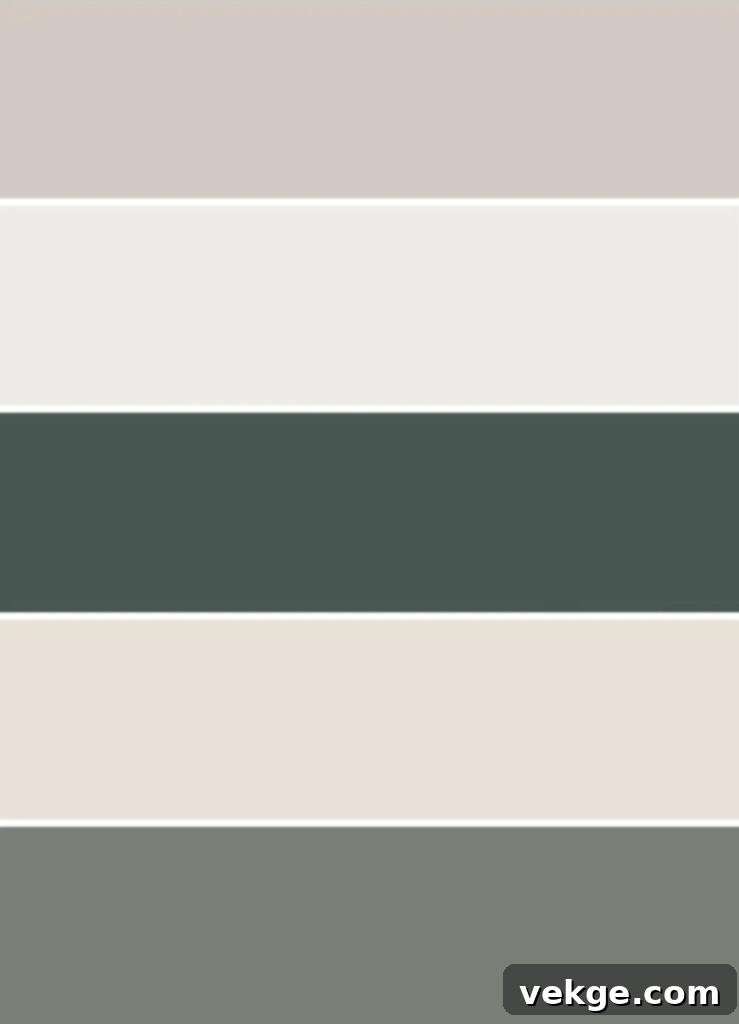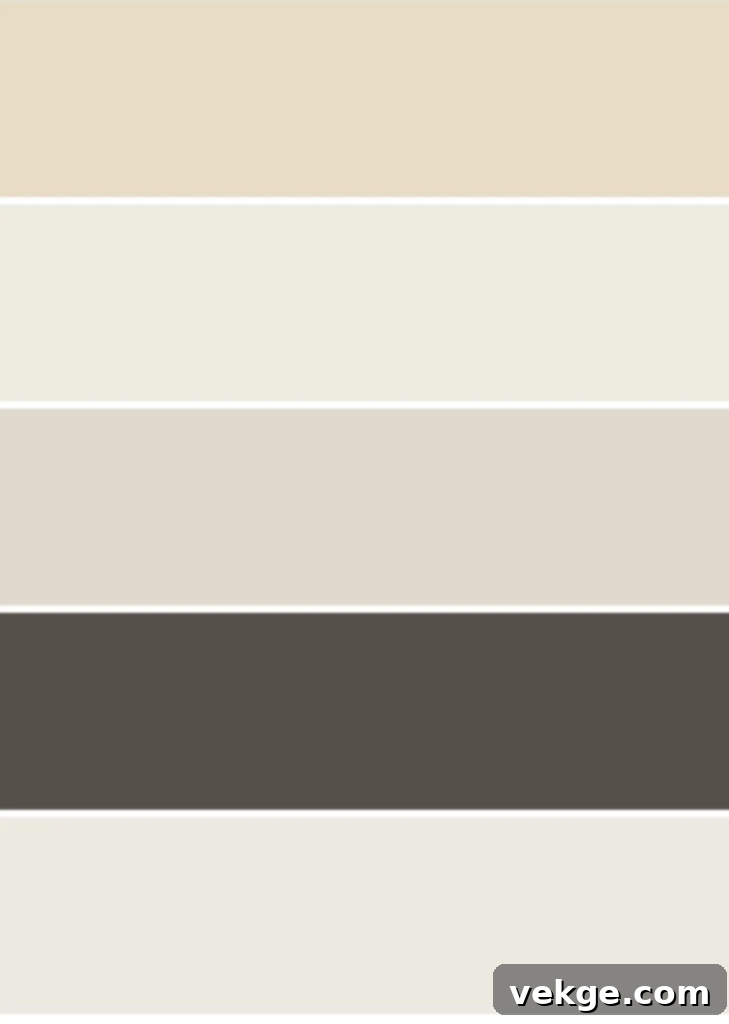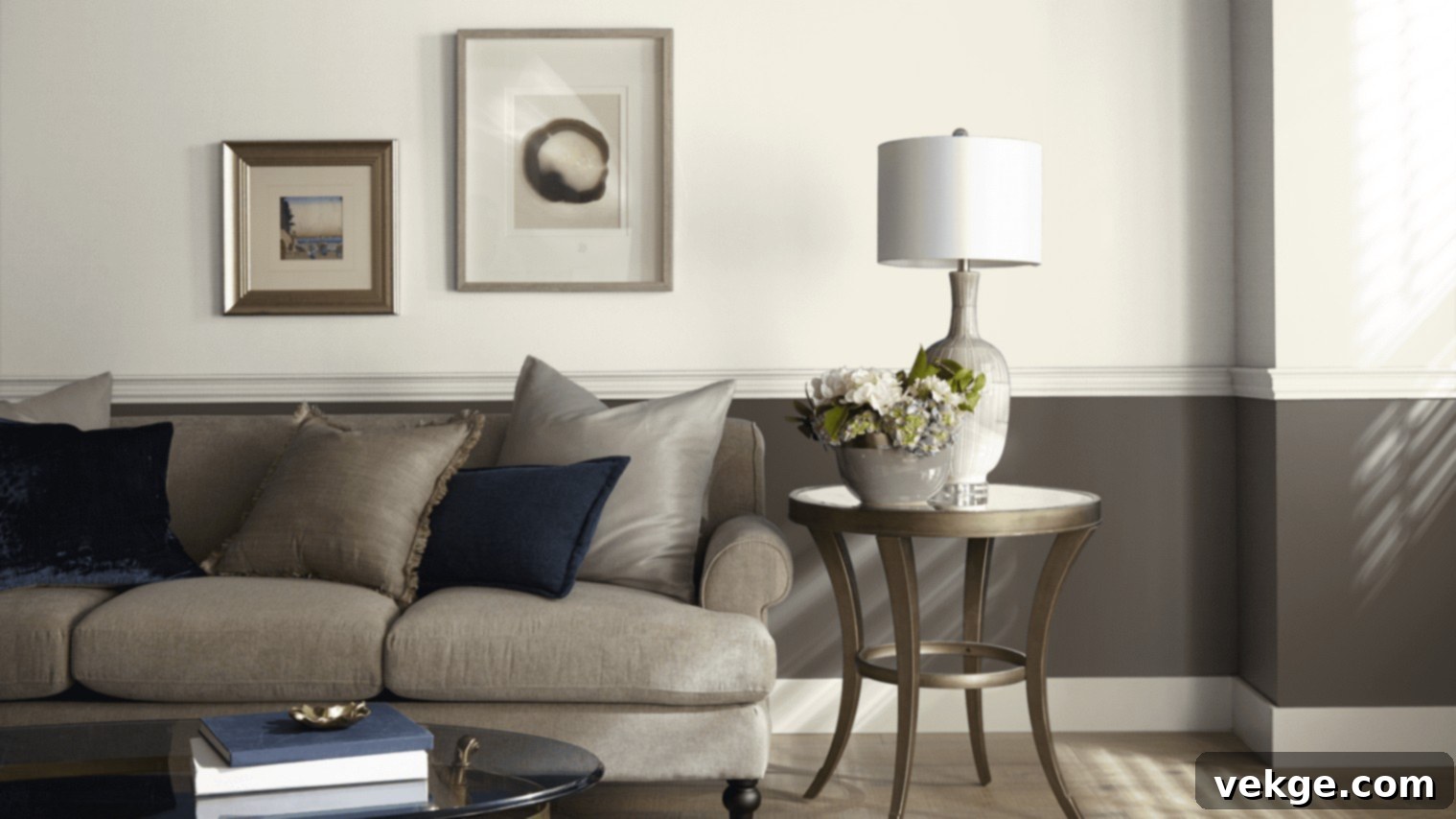Benjamin Moore Swiss Coffee: Your Ultimate Guide to This Beloved Off-White Paint Color
Choosing the perfect paint color for your home or office is a significant decision that profoundly impacts the atmosphere and aesthetic of any space. It’s not merely about picking a shade you like; it involves a careful consideration of undertones, lighting, and how a color interacts with its surroundings. In the vast and often confusing world of off-white paints, Benjamin Moore Swiss Coffee (OC-45) stands out as a consistently popular and globally recognized choice.
Known for its inherent warmth and versatility, BM Swiss Coffee is frequently lauded for its ability to deliver a modern yet inviting touch to walls, appealing to homeowners and designers alike. Its creamy, soft appearance has made it a go-to for many seeking a sophisticated neutral backdrop.
However, popularity doesn’t always equate to universal suitability. While Benjamin Moore Swiss Coffee is undoubtedly a beautiful color, understanding its nuances is crucial to ensure it’s the ideal fit for *your* specific design vision. Does it truly deliver the “right” results for every setting? What are its hidden characteristics? In this comprehensive guide, we’ll delve deep into Benjamin Moore Swiss Coffee, exploring its unique properties, how it behaves under different conditions, and whether it’s the perfect off-white for your next project.
Unveiling Benjamin Moore Swiss Coffee: A Deeper Look

When acclaimed design studios like Studio McGee choose Benjamin Moore Swiss Coffee to paint a significant portion of their walls—reportedly 75% in some cases—it undeniably speaks volumes about the color’s appeal and performance. This endorsement alone can make it seem like an obvious choice. However, the real question for any homeowner is not just whether a color produces “good results,” but rather, “How appropriate are those good results for *my* unique space and style?”
The pursuit of the perfect soft white for interiors often leads to a handful of highly-regarded options. Among these top contenders, Benjamin Moore Swiss Coffee holds its own alongside other celebrated shades:
- Sherwin-Williams Pure White (SW 7005)
- Sherwin-Williams Alabaster (SW 7008)
- Benjamin Moore White Dove (OC-17)
- Benjamin Moore Swiss Coffee (OC-45)

Each of these shades possesses distinct characteristics that contribute to its unique appeal. To truly understand a paint color’s inherent qualities, particularly its brightness, designers often refer to its Light Reflectance Value (LRV). If you’re new to this term, LRV is a crucial metric ranging from 0 to 100. It quantifies the amount of visible light that a painted surface reflects and absorbs.
- An LRV of 0 represents absolute black, absorbing all light.
- An LRV of 100 signifies pure white, reflecting all light.
Essentially, a higher LRV value indicates a lighter, more reflective shade, making a room feel brighter and more spacious. For Benjamin Moore Swiss Coffee, the LRV is 83.93. This value clearly positions it as a light, off-white shade. However, the numbers don’t tell the whole story. Despite its high LRV, many observers note that BM Swiss Coffee can reveal a subtle, sometimes unexpected, greenish tint on the walls, distinguishing it from other off-whites with similar LRVs.
How White is Benjamin Moore Swiss Coffee? Exploring its Character
Benjamin Moore eloquently describes Swiss Coffee as:
“An essential white with just the right amount of warmth.”
– Benjamin Moore
This definition perfectly encapsulates the essence of BM Swiss Coffee. It is indeed an off-white, distinguished by its delicate, warm undertones. Unlike a stark, pure white, Swiss Coffee offers a softer, more inviting ambiance. Upon closer inspection, you might perceive a subtle grey tint, contributing to its sophisticated depth. And, as hinted earlier, a faint green undertone often emerges, particularly in certain lighting conditions.
The presence of a green undertone in a “white” paint might seem counterintuitive, as it’s not a common characteristic people actively seek when choosing a white. Yet, in BM Swiss Coffee, this green undertone is exceptionally subtle—never sharp or overwhelming. Instead, it contributes to the paint’s organic, earthy feel, preventing it from appearing too yellow or sterile. It’s this nuanced complexity that gives Swiss Coffee its unique charm and makes it a favorite among those who appreciate sophisticated, muted tones.
To truly grasp the character of Benjamin Moore Swiss Coffee, it’s often helpful to compare it to a closely related, yet distinct, shade: Benjamin Moore White Dove (OC-17). Both are celebrated off-whites from the same brand, and they share many similarities. However, a key difference lies in their undertones. Unlike Swiss Coffee, BM White Dove typically leans away from green, offering a cleaner, slightly brighter appearance that is often described as a soft, creamy white with barely-there greige undertones.
Both BM Swiss Coffee and BM White Dove belong to the yellow-hue family, which explains their inherent warmth. However, White Dove, with its higher LRV (85.38), often appears whiter and brighter than Swiss Coffee. If your primary goal is a very clean, bright off-white, White Dove might be the more obvious choice. But if you desire a color with a bit more complexity, a softer edge, and a whisper of green or grey, then Swiss Coffee becomes a compelling contender. Understanding these subtle differences is paramount when selecting the perfect shade for your home.
Benjamin Moore’s Swiss Coffee and Its Elusive Undertones
One of the most fascinating and sometimes perplexing aspects of Benjamin Moore Swiss Coffee is its array of undertones. This paint color isn’t a simple one-note white; it can reveal hints of green, grey, and yellow, making it a chameleon on your walls. The perception of these undertones is highly subjective and can vary dramatically from one space to another, and even from one person to another.
It’s important to acknowledge that not everyone who uses BM Swiss Coffee will experience all these undertones equally, or even at all. This phenomenon is often less discussed but critically important: the way paint undertones manifest can be deeply personal and contingent on various factors.
For some designers and homeowners, Benjamin Moore Swiss Coffee acts as a remarkably neutral, warm white, with no discernible strong undertones. In these instances, it serves as a perfect backdrop that feels inviting and clean. For others, however, the yellow tint might be more pronounced, lending a creamy quality. And for a significant number, the subtle green or grey undertones become noticeable, especially at certain times of day or when paired with particular furnishings and natural elements.
The greyish undertone in Swiss Coffee often plays a crucial role in balancing the yellow, preventing the color from appearing too overtly “cream” or “butter yellow.” This complexity is precisely what gives Swiss Coffee its sophisticated edge. However, as with all paint colors, the lighting conditions of a room are the ultimate determinant of how BM Swiss Coffee will present itself on your walls. The interaction between light and paint is dynamic, constantly changing the perceived color throughout the day.
Despite the complexity of its undertones, there’s a clear consensus: BM Swiss Coffee is undeniably a warm shade of white. It imparts a soft, clean, and inviting feel to any space, making it a popular choice for creating cozy yet refined interiors. To truly appreciate its character and predict its behavior in your home, testing paint samples is an indispensable step. Applying large swatches on different walls and observing them throughout the day will provide the most accurate representation of how this versatile color will look in your unique environment.
The Dynamic Effect of Light on Benjamin Moore Swiss Coffee
The availability and quality of light in a room are arguably the most influential factors determining how a paint color, especially a nuanced off-white like Benjamin Moore Swiss Coffee, will appear. Natural light, in particular, varies significantly depending on the room’s orientation to the cardinal directions. Understanding these variations is key to predicting how Swiss Coffee will transform your walls.
1. East-Facing Rooms

East-facing rooms are bathed in bright, warm, yellow-orange light during the morning hours. As the day progresses into the afternoon and evening, this light softens and becomes cooler. In an east-facing room, Benjamin Moore Swiss Coffee will likely appear its warmest and creamiest in the morning, with its yellow undertones being most prominent. As the light cools in the afternoon, the subtle green or grey undertones may become more noticeable, offering a soft, muted off-white. If the room is primarily used in the morning, Swiss Coffee will enhance its inviting warmth. If active in the evening, its softer character will prevail.
2. West-Facing Rooms

West-facing rooms receive bright, intense, and often hot afternoon light, which casts a strong yellow or orange glow. In such conditions, Benjamin Moore Swiss Coffee’s inherent warmth can be significantly amplified, making it appear much creamier and richer, potentially leaning towards a soft yellow rather than a pure off-white. If the room is used predominantly during these afternoon and early evening hours, it might feel exceptionally cozy. However, if the room is also used in the cooler morning light, Swiss Coffee will present as a more balanced, warm off-white, as the strong afternoon warmth hasn’t yet dominated the space.
3. North-Facing Rooms

North-facing rooms typically receive indirect, cooler, and often bluish light throughout the day. This cool light can profoundly impact how paint colors are perceived. When applied in a north-facing room, Benjamin Moore Swiss Coffee’s subtle green and grey undertones are most likely to emerge, potentially making it appear less warm or even slightly muted. However, its inherent warmth often provides a much-needed balance against the cool light, preventing the room from feeling stark or cold. It can create a beautiful, sophisticated greige-white effect, adding depth and character where a pure white might feel flat.
4. South-Facing Rooms

South-facing rooms are blessed with abundant, bright, and consistent natural light throughout the day. This steady stream of warm, often intense light means that Benjamin Moore Swiss Coffee will likely showcase its true character here, with its warmth being celebrated and its undertones subtly visible. The natural brightness will prevent it from ever looking dull, instead allowing it to appear as a beautiful, soft, creamy white. Both warm and cool accent shades can work well in these rooms, as the strong light balances everything. Swiss Coffee provides a beautiful, inviting backdrop that feels both clean and cozy.
The Critical Role of Natural vs. Artificial Light
Beyond the influence of natural light from cardinal directions, artificial lighting plays an equally crucial, yet often overlooked, role in how Benjamin Moore Swiss Coffee appears. The type of light bulb you choose can dramatically alter the perceived color of your walls, making a seemingly perfect paint choice appear completely different.
To master the interplay between artificial light and your paint color, understanding the Kelvin temperature of light bulbs is essential. Kelvin (K) is a unit of measurement used to describe the color temperature of light emitted by a bulb:
- Warm Light (2700K – 3000K): Emits a soft, yellowish glow, similar to incandescent bulbs. When paired with Benjamin Moore Swiss Coffee, warm light will accentuate its yellow undertones, making the paint appear creamier and more saturated. This can enhance its cozy, inviting feel, but might push it closer to a true “cream” than a soft white.
- Neutral Light (3500K – 4000K): Offers a balanced, clean white light, often found in offices. Neutral light typically provides the most accurate representation of BM Swiss Coffee, allowing its subtle green and grey undertones to surface without being overly emphasized by extreme warmth or coolness.
- Cool/Daylight (5000K – 6500K): Mimics bright natural daylight, casting a bluish-white light. In cool lighting, Swiss Coffee’s yellow undertones will be subdued, and its green or grey undertones may become more prominent, making the paint appear cooler and less warm than intended. This could potentially make the room feel less inviting if not balanced with other warm elements.
It’s vital to look beyond the descriptive names on light bulb packaging, as terms like “soft white” can be misleading. Always check the Kelvin number (K) on the box to understand the actual color temperature. When testing paint samples, observe them under your actual artificial lighting conditions—both during the day and at night—to ensure you achieve the desired effect with Benjamin Moore Swiss Coffee.
Who Should Choose Benjamin Moore Swiss Coffee?
While Benjamin Moore Swiss Coffee is a highly versatile and popular color, it shines brightest in specific scenarios. It’s not a one-size-fits-all solution, but rather a nuanced choice for those with particular design intentions:
- For Subtle Warmth Without Overt Yellow: If you desire a warm off-white but want to avoid anything that feels too yellow, creamy, or ‘buttery,’ Swiss Coffee is an excellent contender. Its grey and green undertones prevent it from becoming overly saturated with yellow, maintaining a sophisticated balance.
- To Complement Natural Elements: Homes featuring abundant natural wood tones, stone, or indoor plants will find BM Swiss Coffee harmonizes beautifully. Its subtle green undertone can effortlessly tie into organic textures, creating a cohesive and serene environment.
- For a Classic or Transitional Aesthetic: Swiss Coffee lends itself well to traditional, farmhouse, and transitional design styles. It provides a soft, inviting backdrop that feels timeless and elegant, rather than starkly modern.
- When Seeking a Lived-In, Sophisticated Feel: If your aim is to create a space that feels inherently welcoming, gentle, and softly aged rather than crisp and stark, Swiss Coffee’s inherent warmth and nuanced character are ideal.
- As a Historical or Period-Appropriate White: For older homes or those replicating a vintage aesthetic, this paint can provide an authentic, softer white that feels true to architectural heritage.
- For Exterior Applications with Ample Sunlight: On exteriors, especially those receiving generous sunlight, Swiss Coffee can appear brighter and less weighted by its undertones, offering a classic, inviting facade that retains its warmth even in bright light.
The undeniable fact is that Benjamin Moore Swiss Coffee is a wonderfully versatile color. However, its true magic lies in its ability to offer a soft, nuanced alternative to brighter whites. It’s less recommended if your absolute primary goal is a truly “bright white” that maximizes perceived light reflection, as its undertones will always give it more depth and character than a purer white with a higher LRV.
Wrapping Up: Making an Informed Choice with Benjamin Moore Swiss Coffee
Benjamin Moore Swiss Coffee, despite its widespread acclaim and popularity, is clearly not a “one-size-fits-all” paint color. Its complex interplay of warm undertones, including subtle hints of yellow, grey, and green, means that it can behave quite differently from one space to another. The magic of this particular shade lies in its nuanced character, which makes it incredibly versatile for those who understand how it interacts with its environment.
Many individuals are drawn to BM Swiss Coffee purely due to its popularity, without fully appreciating how its subjective nature—influenced by natural light, room orientation, artificial lighting, and surrounding decor—will manifest in their own homes. What looks stunning in a perfectly curated photo or a well-lit showroom might take on a surprisingly different persona on your walls.
We hope this in-depth article has provided you with a clearer understanding of the dynamic qualities of Benjamin Moore Swiss Coffee, empowering you to make an informed decision. Remember that choosing paint is an experiential process. Always invest in paint samples, apply large swatches to different walls in your room, and observe them at various times of day and under different lighting conditions. This diligent approach will prevent costly mistakes and ensure that Benjamin Moore Swiss Coffee delivers the precise aesthetic you envision for your home. If your primary goal is the brightest, purest white, exploring alternatives with higher LRVs and fewer undertones might be a better path for you.
Frequently Asked Questions About Benjamin Moore Swiss Coffee
Which Is the Best Trim Color for Benjamin Moore Swiss Coffee?
While “white” is the concise answer, the specific shade of white trim can significantly impact the overall look when paired with Benjamin Moore Swiss Coffee. For a clean, crisp contrast that makes Swiss Coffee appear warmer, consider a brighter white like Benjamin Moore Chantilly Lace (OC-65) or Benjamin Moore Decorator’s White (OC-149). If you prefer a softer, more blended look, Benjamin Moore White Dove (OC-17) can be an excellent choice, as its slight warmth complements Swiss Coffee beautifully. For a truly seamless, monochromatic aesthetic, you can even use Swiss Coffee on the trim, though this will minimize contrast and create a more enveloping feel. Always test your trim color alongside a sample of Swiss Coffee to ensure the harmony you desire.
Can Benjamin Moore Swiss Coffee Be Used for Exteriors?
Yes, Benjamin Moore Swiss Coffee is a fantastic option for exteriors! When used outdoors, especially under ample natural sunlight, its undertones tend to become less pronounced, and the color often appears brighter and cleaner than it might indoors. It provides a beautiful, inviting, and classic white that is neither too stark nor too yellow. It works wonderfully on traditional, farmhouse, coastal, and even modern architectural styles. However, the same rule applies: sample, sample, sample! Paint large swatches on different sides of your home and observe them throughout the day, as sunlight exposure and surrounding landscaping will influence its appearance.
Is Benjamin Moore Swiss Coffee an Ideal Option for Having Soft White Walls?
Whether Benjamin Moore Swiss Coffee is “ideal” for soft white walls depends on your definition of “soft white.” If you envision a bright, clean white that still offers a touch of warmth but largely stays away from noticeable undertones, then Swiss Coffee might not be the absolute best choice. Its LRV of 83.93 means it’s still quite light, but its inherent yellow, grey, and green undertones give it a more complex, creamy character that might be too much if you’re aiming for a purer white. However, if “soft white” to you means a cozy, inviting, and slightly creamy off-white with character and depth, then BM Swiss Coffee is an excellent, sophisticated option. It provides warmth and softness without being stark, making a room feel more lived-in and comfortable.
